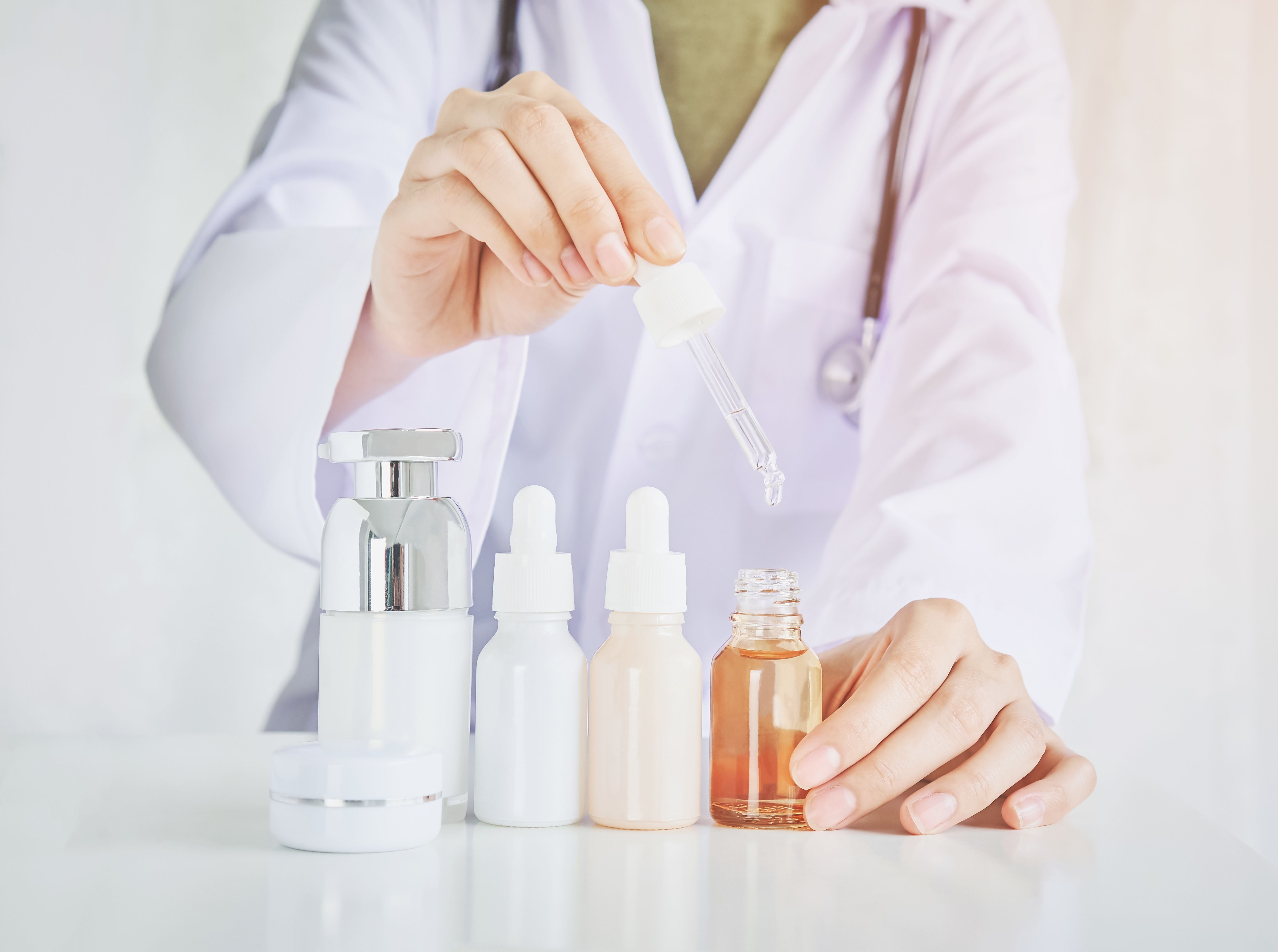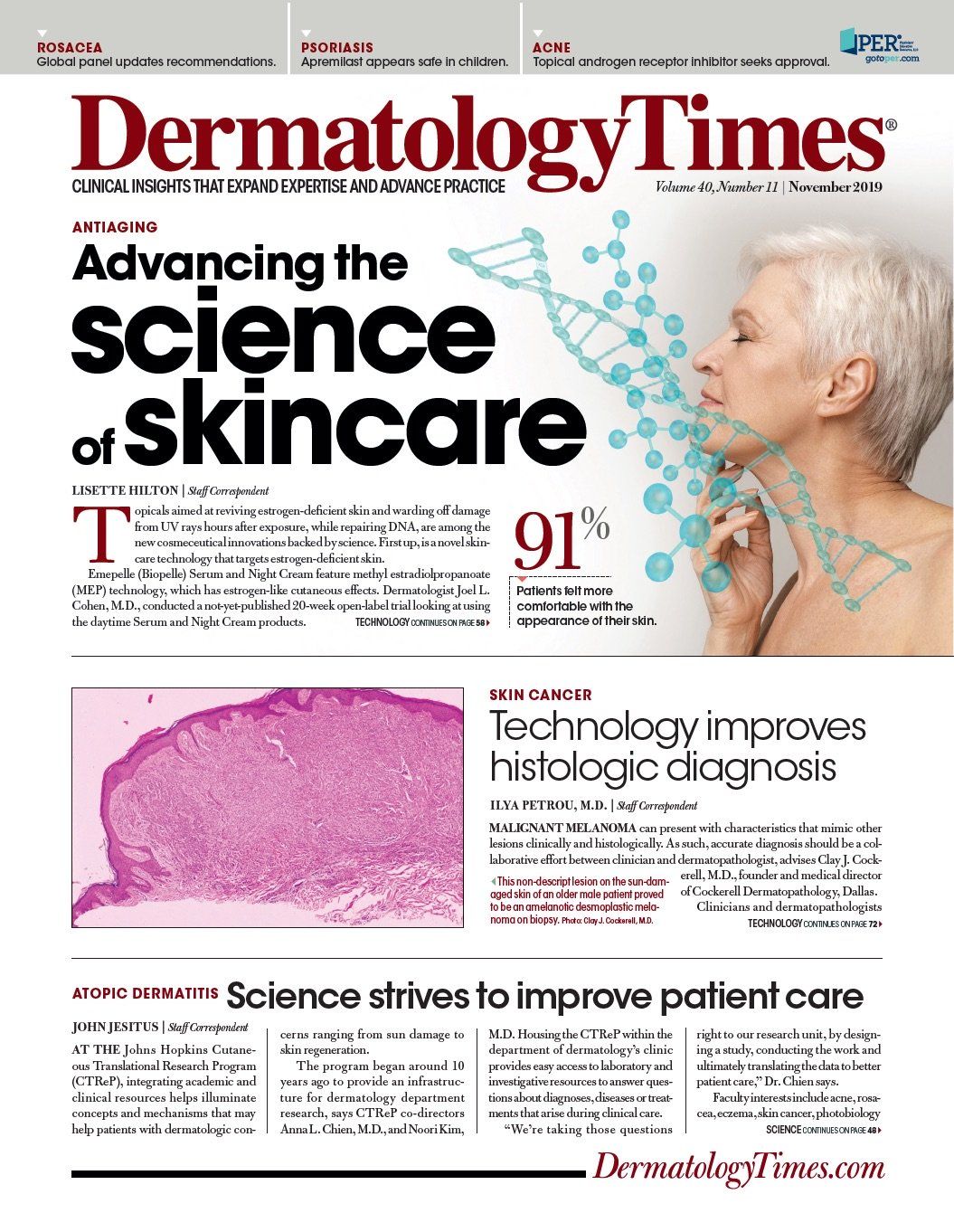- General Dermatology
- Eczema
- Alopecia
- Aesthetics
- Vitiligo
- COVID-19
- Actinic Keratosis
- Precision Medicine and Biologics
- Rare Disease
- Wound Care
- Rosacea
- Psoriasis
- Psoriatic Arthritis
- Atopic Dermatitis
- Melasma
- NP and PA
- Anti-Aging
- Skin Cancer
- Hidradenitis Suppurativa
- Drug Watch
- Pigmentary Disorders
- Acne
- Pediatric Dermatology
- Practice Management
Cosmetic technology advances
Dr. Draelos answers questions regarding different types of moisturizers, including stem cell and biologic-containing products in this Cosmetic Conundrums article.
Dr. Draelos answers questions regarding different types of moisturizers. (sitthiphong - stock.adobe.com)

Dr. Draelos

Q. How are the new personalized facial moisturizers created?
Sophisticated technology has entered the cosmeceutical moisturizer market to yield a new generation of personalized cosmetics. The idea of making a facial moisturizer that works “uniquely with your skin, using your own body’s regenerative capabilities” is quite enticing. This customization is based on the use of platelet rich plasma (PRP), which has been recently popularized for many different purposes.
RELATED: Increasing skin water content and moisturization
PRP is obtained by drawing 50cc of blood into a syringe containing 5cc of an anticoagulant. The blood is then centrifuged to separate the red blood cells that are subsequently discarded. The serum is drawn off and recentrifuged to obtain the PRP, which is found at the bottom of the tube. The PRP is drawn up into a syringe and used for many different purposes. It can be injected into different body areas including the knee joint to improve osteoarthritis or into orthopedic injuries to enhance healing; however, there are few well-controlled studies and little other data to support benefits.
In dermatology, PRP has been injected into the scalp to increase hair growth and enhance the success of hair transplantation. It has been used for skin rejuvenation purposes by injecting into facial skin, but it can also be applied topically by mixing PRP into a moisturizer base. This then allows the development of patient customized moisturizers that build on interest in the rejuvenating properties of PRP. The moisturizer must be refrigerated and has a limited
shelf life. These products are made and dispensed in physician’s offices with numerous PRP clinics advertising on the Internet. More research and controlled studies are needed to develop good science behind the use of PRP in dermatology.
RELATED: Cleanser mildness concepts explained
Q. What comprises human stem cell moisturizers and how do they work?
Another high-tech moisturizer formulation contains human stem cells designed to “restore skin youth.” These products disclose they contain stem cell peptides from unfertilized donated human eggs. The eggs are obtained from donor banks that are left over from infertility treatments, where the proteins are broken down to obtain peptides. Peptides are the building blocks of all proteins, whether the source is cow skin or human eggs, and the source becomes less important once proteins are denatured to the peptide level. Once denatured, human stem cells do function as progenitor cells.
Many time-tested moisturizer formulations contain peptide fragments, the most common being hydrolyzed collagen, usually obtained from cow skin. Other, more sophisticated modern formulations may contain patented collagen peptide fragments, such as Matrixyl. Proteins and peptides function as humectants with the ability to absorb water, an important moisturizing property. Human stem cell peptides function in this manner, but are unlikely to provide any additional antiaging benefits.
RELATED: Facial care fleshed out
Q. How are the biologiccontaining moisturizers applied for optimal efficacy?
PRP and human stem cell peptide-containing moisturizers are considered to contain biologic ingredients. This is an area of controversy from a regulatory standpoint and the FDA has issued warning letters to several companies making robust claims in this moisturizer category. The safety of some of these hightech formulations may be in the inability of proteins and peptides to traverse the stratum corneum, which is uniquely designed to keep these allergenic substances out of the body. However, in order to realize benefit from the formulations, the peptides must reach the viable skin.
This has led to development of a variety of handheld electroporation devices to decrease the skin barrier. These home-use minimal-risk devices are very popular in some Eastern European areas, especially Korea, and they are finding their way into the United States. The peptide-containing moisturizer is put on the skin surface, and the device is then rubbed over the moisturizer to enhance penetration. It is challenging to know what is really improving skin appearance with these treatments. Is it the biologic ingredient, the moisturizer or the radiofrequency device? This new area of dermatology is still in its infancy with the need for more data for assessment. Â

